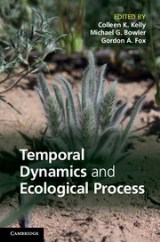Temporal Dynamics and Ecological Proces

C K Kelly, M G Bowler and G A Fox (Eds)
Cambridge University Press, £60.00
The idea that species can have good years and bad years will be familiar to any observer of the natural world, but this volume takes the idea a step further: if different species have different good years then there is the basis of a mechanism that can allow competing species to coexist in a community. How species coexist in diverse communities, without one or a few outcompeting the many is a key question in our understanding of how biological communities are assembled.
Where competitive exclusion is relatively unimportant, mechanisms such as negative density dependence, recruitment limitation and disturbance events have been proposed. Temporal Dynamics and Ecological Process explores the emerging evidence for niche differentiation through time, the idea that species can coexist because different species recruit best in different types of years so they each have different good years, and years are sufficiently different to favour them all within their respective lifetimes.
The various chapters gather the evidence for temporal niche differentiation in a variety of plant communities, including seed dormancy among prairie and desert annuals, and episodic recruitment of trees in a tropical dry forest. Most of the studies explore the data with mathematical models that incorporate temporal dynamics, which means this book isn't for the mathematically faint-hearted.
However, the evidence that temporal niche differentiation and environmental fluctuation can promote species coexistence in some plant communities is compelling, and further research will help us to understand how it interacts with other community assembly mechanisms.
Dr Ian Powell


